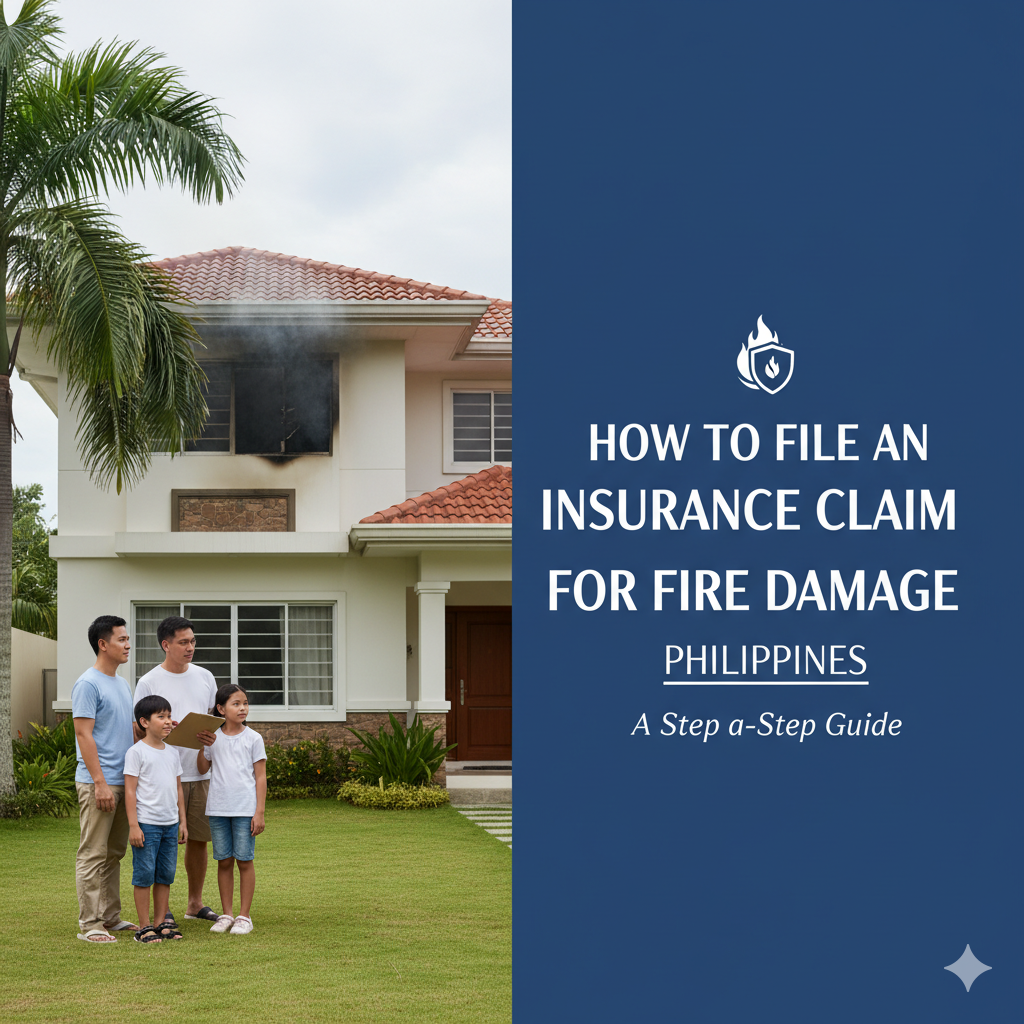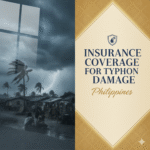Quick guide to filing a fire insurance claim in the Philippines
A fire is traumatic — the first priority is safety, then recovery. If your home or business was damaged by fire, knowing the exact steps and documents to submit will save time and reduce stress. This short guide explains how to file an insurance claim for fire damage Philippines so you can move from loss to recovery with fewer surprises.
Many policyholders trip over missing paperwork or timing rules. Follow a clear checklist — who to call, what reports to get, what to photograph — and you’ll be far more likely to get a fair, timely settlement. Below you’ll find step-by-step actions, a documents checklist, common pitfalls, and quick FAQs to help with how to file an insurance claim for fire damage Philippines.
This guide is grounded in what insurers and the Bureau of Fire Protection (BFP) typically require: prompt notification, an official fire/incident certificate, an itemized proof of loss, and cooperation with the insurer’s adjuster. Read on for a practical, prioritized plan for how to file an insurance claim for fire damage Philippines that insurance companies expect. bfp.gov.ph+1
Step-by-step: What to do in the first 48 hours
-
Ensure safety and call emergency services. Make sure everyone is safe and that the fire is out. Get the BFP on scene — their incident report / fire incident certificate is often essential for claims. bfp.gov.ph
-
Notify your insurer immediately. Most insurers expect prompt notice right after the incident; many claim checklists say to inform the company within 24–48 hours. Do this by phone and follow up in writing (email or the insurer’s online portal). cocogen.com+1
-
Secure and document the damage. Take time-stamped photos/video of every damaged area and item before clean-up (when safe to do so). Preserve evidence and keep receipts for temporary repairs. philtechadjusters.com
-
Get official reports. Request the BFP Fire Incident Certificate (or investigation report if issued) and, if applicable, a police report (for suspected arson). These are routine documentary requirements. bfp.gov.ph+1
-
Prepare an inventory and proof of ownership. List damaged items (model, brand, age, approximate value). Gather receipts, invoices, warranties, title deeds, or lease contracts that prove ownership or insurable interest. philtechadjusters.com
Documents checklist (common requirements)
-
Completed insurer claim form / formal proof of loss. prudentialguarantee.com
-
BFP Fire Incident Certificate / Fire Investigation Report. bfp.gov.ph
-
Photos and videos of damage; site plan/house floor plan if available. philtechadjusters.com
-
Proof of ownership (receipts, deeds, inventory lists). philtechadjusters.com
-
Barangay certification or occupancy permit (for property claims), if required. cocogen.com
-
Police report (if arson or criminality is suspected). philtechadjusters.com
-
Repair/contractor estimates and temporary repair invoices. prudentialguarantee.com
Different insurers may request extra documents (business financials for commercial losses, tax returns, or forensic reports for large losses), so always check your policy and your insurer’s checklist. cocogen.com+1
What to expect from the insurer
-
Adjuster inspection. After you notify the company, an adjuster will inspect the site, review documents, and may request additional proofs. Cooperate fully and keep copies of everything. prudentialguarantee.com
-
Proof-of-loss and negotiation. You’ll submit a sworn proof of loss or claim form; the insurer will verify and negotiate settlement amounts for repair or replacement. philtechadjusters.com
-
Timing for payment. Under Philippine rules for non-life policies, insurers are generally expected to pay within 30 days after proof of loss is received and the loss amount is agreed or determined (by agreement or arbitration). Timely submission of complete documentation speeds resolution. Philippine Insurance Commission
Common mistakes to avoid
-
Delaying notification to the insurer.
-
Disposing of damaged property before the adjuster inspects it (unless it’s a safety hazard — document first).
-
Not obtaining the BFP fire incident certificate or police report when needed.
-
Missing receipts, proof of ownership, or failing to secure temporary repairs properly. bfp.gov.ph+1
FAQs
Q: Do I always need a BFP report to claim?
A: For fire losses the BFP Fire Incident Certificate or investigation report is among the standard documentary requirements used by insurers in the Philippines. If the BFP did not attend, discuss alternatives with your insurer immediately. bfp.gov.ph+1
Q: How long will the insurer take to settle?
A: Philippine rules point to settlement after proof of loss is received and amount is ascertained; insurers typically aim to conclude claims within 30 days after proof is in and agreement is reached, but complex claims can take longer. Philippine Insurance Commission
Q: My policy lapsed — can I still claim?
A: Coverage depends on the policy period and premium status. If the fire happened during an active coverage period and premiums were paid according to the policy terms, you may still be covered; check with your insurer and retain documentation. RESPICIO & CO.+1
Q: What if the insurer denies my claim?
A: Ask for the denial in writing with reasons given. You can request internal review, file a complaint with the insurer, or bring the case to the Insurance Commission if you believe the refusal is unjustified. Keep all correspondence. Philippine Insurance Commission
Quick checklist to speed your claim
-
Call emergency services and the BFP. bfp.gov.ph
-
Notify insurer (phone + written). cocogen.com
-
Take photos, secure receipts, make inventory. philtechadjusters.com
-
Request the BFP Fire Incident Certificate and keep copies. bfp.gov.ph
-
Cooperate with adjuster and respond fast to document requests. prudentialguarantee.com
Conclusion
If you keep safety first and then follow a clear process — document the loss, secure the BFP incident certificate, notify your insurer, and submit a full proof of loss — you’ll be following best practice for how to file an insurance claim for fire damage Philippines, how to file an insurance claim for fire damage Philippines, and how to file an insurance claim for fire damage Philippines. A careful, documented approach makes settlements faster and reduces dispute risk. If you’d like, I can turn this into a printable one-page checklist you can use after an incident.


